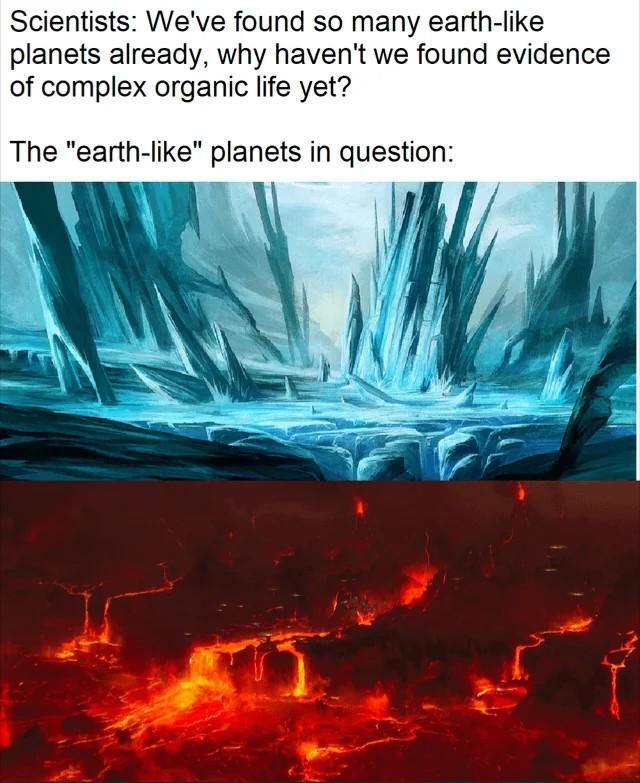this post was submitted on 26 Nov 2023
468 points (97.0% liked)
Science Memes
10304 readers
2821 users here now
Welcome to c/science_memes @ Mander.xyz!
A place for majestic STEMLORD peacocking, as well as memes about the realities of working in a lab.

Rules
- Don't throw mud. Behave like an intellectual and remember the human.
- Keep it rooted (on topic).
- No spam.
- Infographics welcome, get schooled.
Research Committee
Other Mander Communities
Science and Research
Biology and Life Sciences
- [email protected]
- [email protected]
- [email protected]
- [email protected]
- [email protected]
- [email protected]
- [email protected]
- [email protected]
- [email protected]
- [email protected]
- [email protected]
- [email protected]
- [email protected]
- [email protected]
- [email protected]
- [email protected]
- [email protected]
- [email protected]
- [email protected]
- [email protected]
- [email protected]
- [email protected]
- [email protected]
- [email protected]
- !reptiles and [email protected]
Physical Sciences
- [email protected]
- [email protected]
- [email protected]
- [email protected]
- [email protected]
- [email protected]
- [email protected]
- [email protected]
- [email protected]
Humanities and Social Sciences
Practical and Applied Sciences
- !exercise-and [email protected]
- [email protected]
- !self [email protected]
- [email protected]
- [email protected]
- [email protected]
Memes
Miscellaneous
founded 2 years ago
MODERATORS
you are viewing a single comment's thread
view the rest of the comments
view the rest of the comments

It's worth mentioning that we can't "see" any exoplanets at all. We know they are there by the gravitational lensing that occurs when a planet passes in front of the star it orbits. Once we calculate the position and orbit, we can track the planets and listen for any radio waves or radiation that would indicate life. We are also getting better as guessing the chemical composition of the planets, but it's not like we can scan the surface for plants and animals.
That's one way of detecting exoplanets, but not the most common one.
There are a couple of ways we can detect exoplanets:
We can see a wobble in the position of the star, as the star and the planet orbit around their common center of mass, which is offset from the center of mass of the star due to the mass of the planet.
Another way is to observe the light from a star, as the planet passes in front of the star some of the light gets blocked by the planet. By measuring the time and amount of light blocked, we can tell a lot about what is doing the blocking. The benefit of this method is some light passes through the atmosphere of the planet (if it has a significant atmosphere), by analyzing the spectrum we can tell what the atmosphere is made from.
We can also literally see a planet by direct observation, by blocking out the light of the central star, we can see light bouncing off the planet and observe that directly. This is hard, but has been done with several exoplanets.
There are more ways, see this Wikipedia article as a jumping off point for learning all about it: https://en.wikipedia.org/wiki/Methods_of_detecting_exoplanets